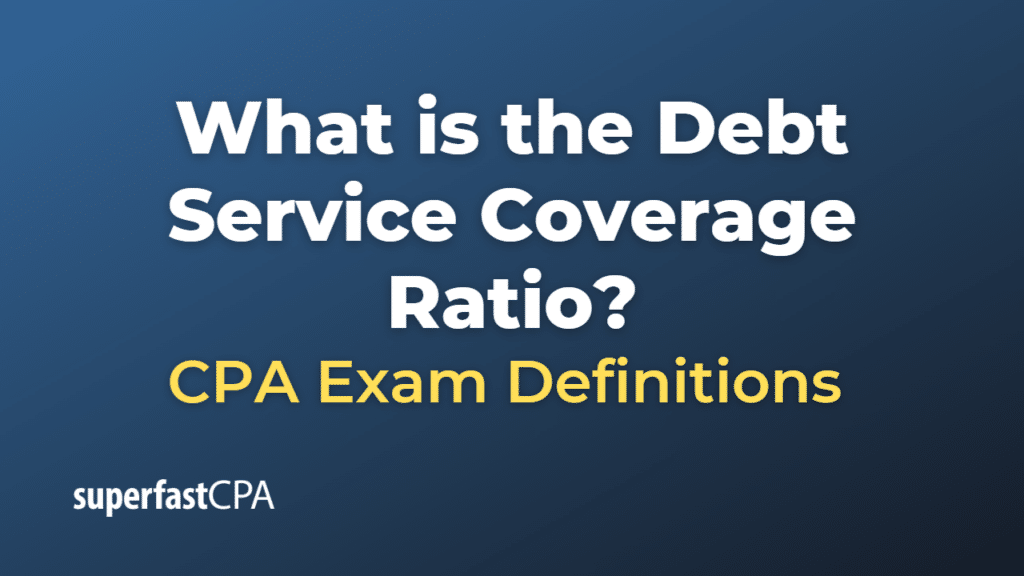Debt Service Coverage Ratio
The Debt Service Coverage Ratio (DSCR) is a financial metric used to assess a company’s ability to service its debt payments. It’s calculated by dividing a company’s Net Operating Income (usually Earnings Before Interest and Taxes, or EBIT) by its total debt service obligations for a given period.
The formula is:
\(\text{DSCR} = \frac{\text{Net Operating Income}}{\text{Total Debt Service}} \)
Where:
- Net Operating Income is the income from a company’s core operations, excluding interest and taxes.
- Total Debt Service refers to the company’s current debt obligations, including both principal and interest payments.
The DSCR indicates how well a company’s earnings can cover its debt obligations. A DSCR of less than 1 indicates that the company’s earnings are insufficient to cover its debt payments, which could lead to liquidity issues. A DSCR of greater than 1 indicates that the company has sufficient earnings to pay its debts. The higher the ratio, the more able the company is to cover its debts, and the less risky it is to lenders or investors.
It’s important to note that acceptable DSCR values can vary depending on the industry and the specific circumstances of the company. However, lenders generally prefer a DSCR of 1.2 or higher when considering whether to extend credit to a business.
Example of the Debt Service Coverage Ratio
Suppose we have a company, let’s call it “ABC Manufacturing”. Here are its financial figures:
- Net Operating Income (EBIT): $500,000
- Total Debt Service (Principal + Interest): $400,000
We can calculate the Debt Service Coverage Ratio (DSCR) as follows:
\(\text{DSCR} = \frac{\text{Net Operating Income}}{\text{Total Debt Service}} \)
\(\text{DSCR} = \frac{\$500,000}{\$400,000} = 1.25 \)
In this case, ABC Manufacturing has a DSCR of 1.25, which suggests that it generates sufficient income to cover its current debt obligations. This is generally a positive sign for lenders and investors as it indicates a lower risk of default.
Remember, though, that while this ratio can provide useful insight into a company’s financial health, it should not be used in isolation. Other factors and financial metrics should also be considered to gain a comprehensive understanding of a company’s financial condition.













